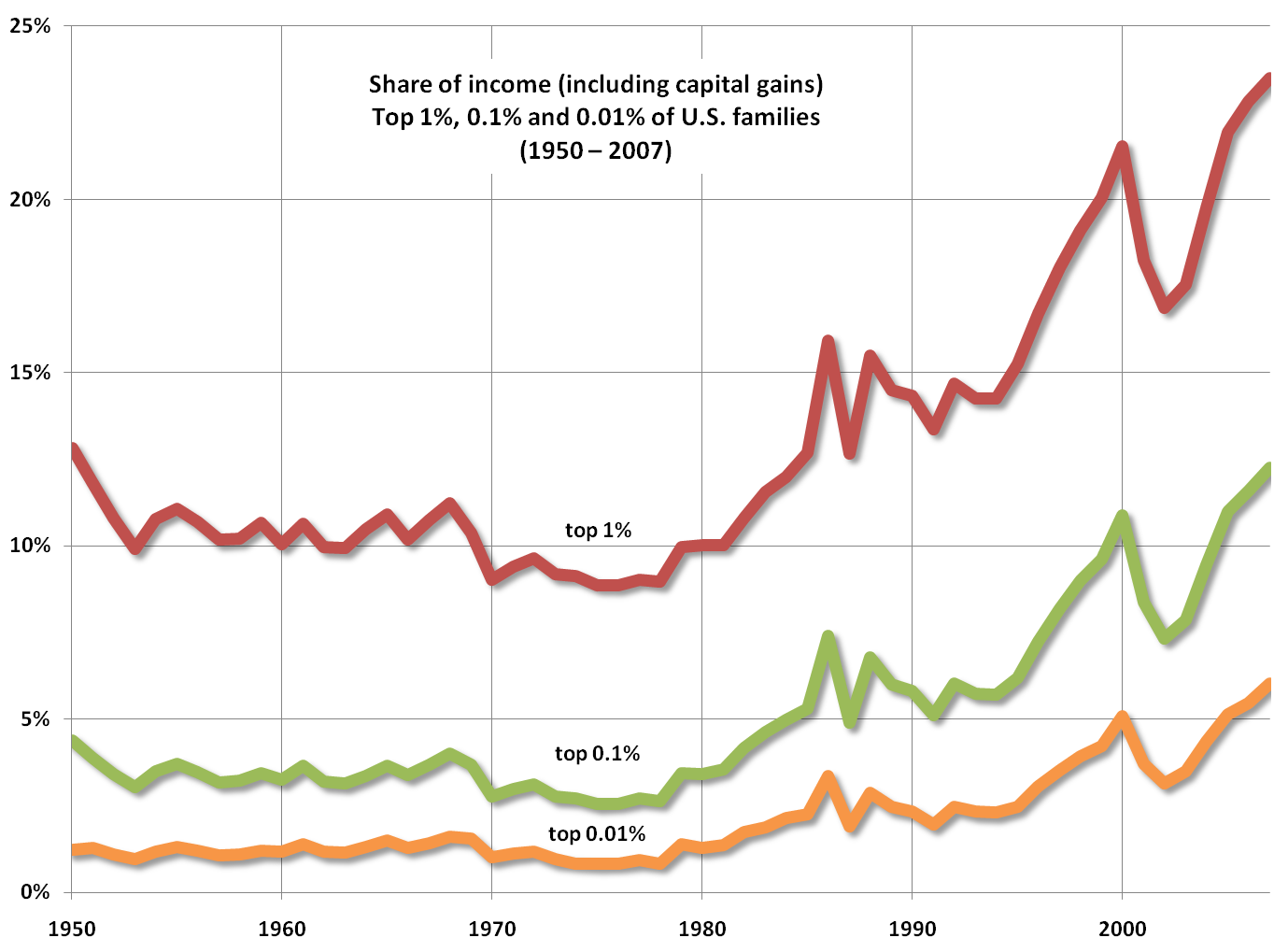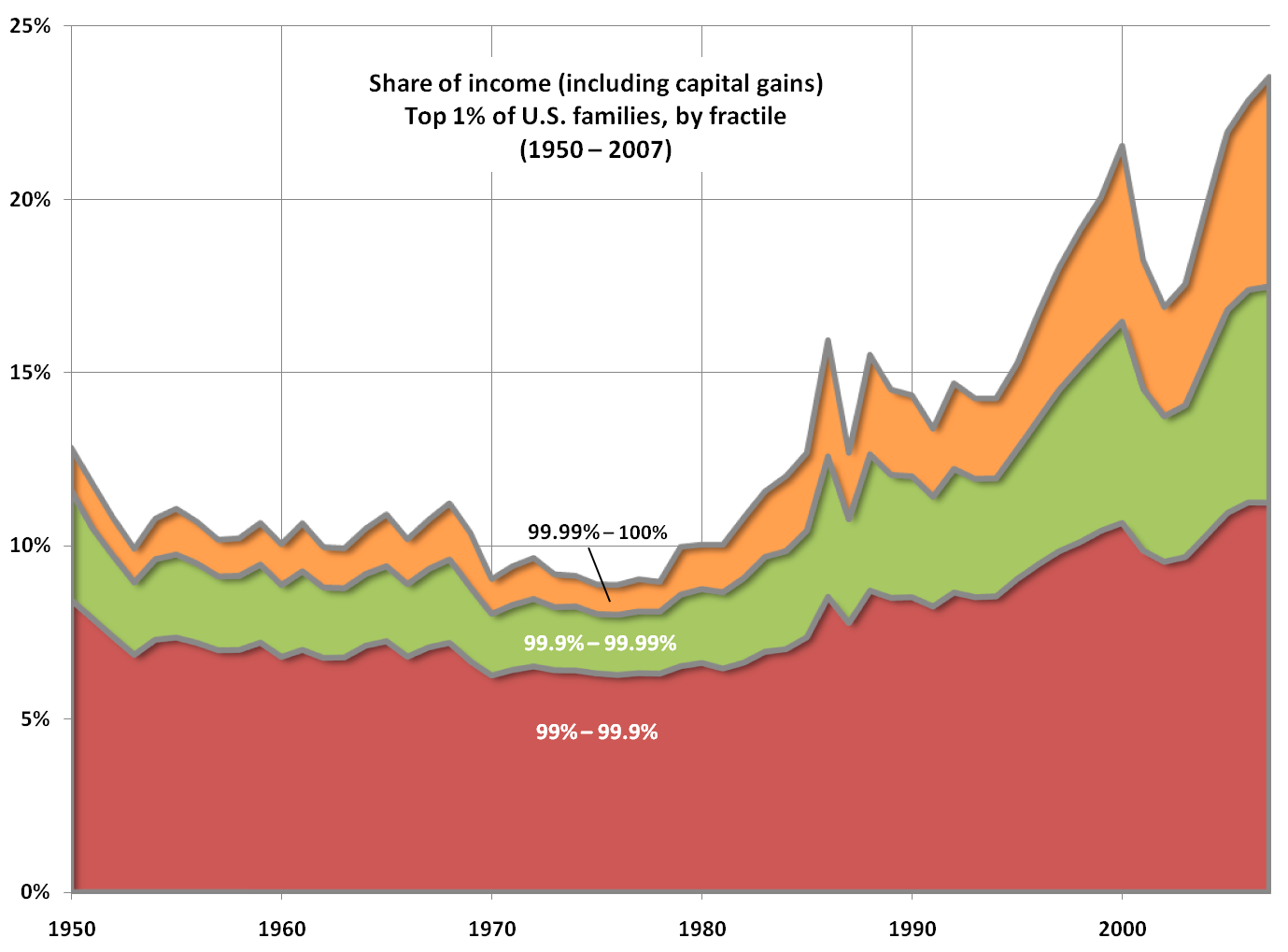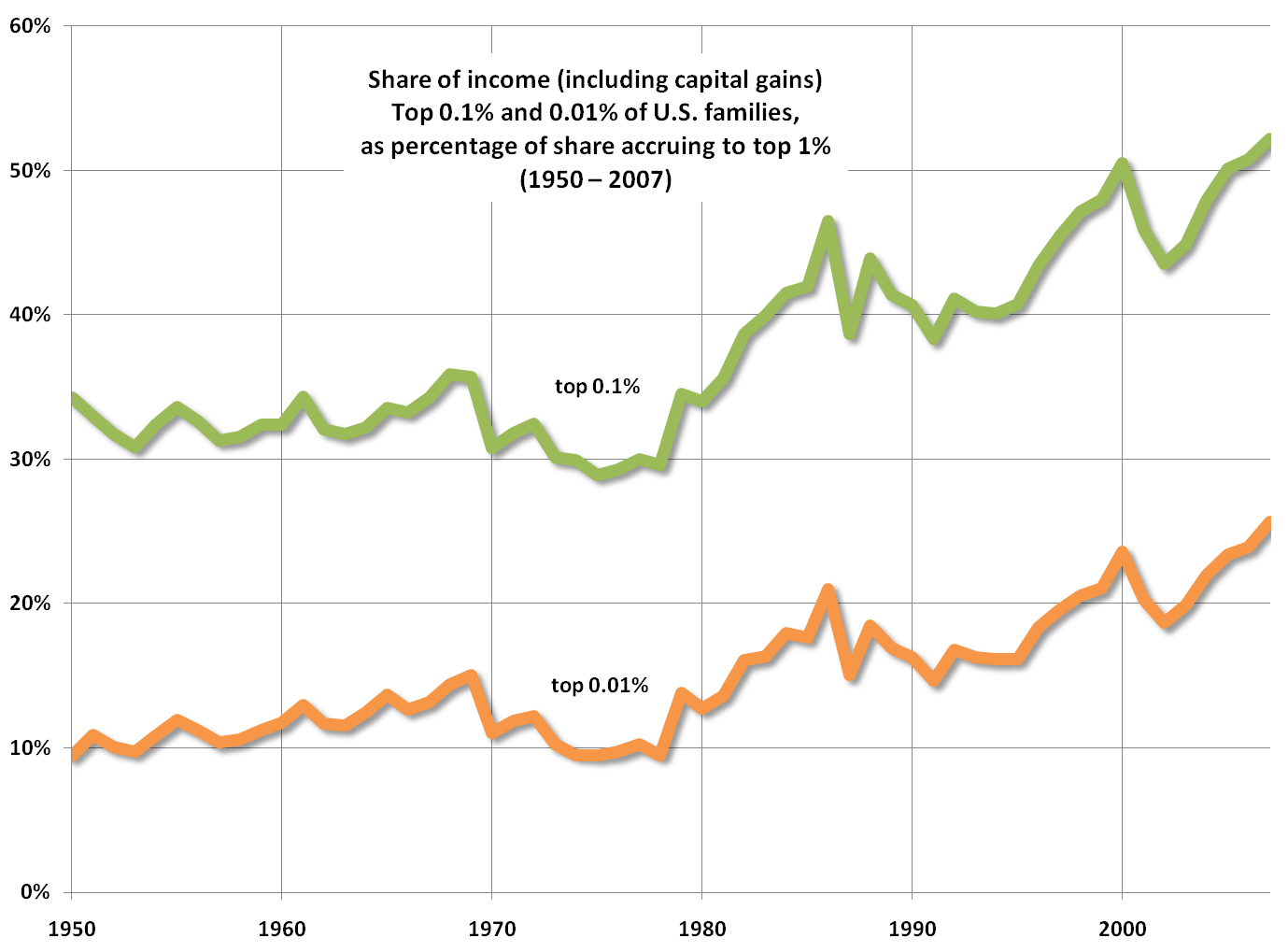What the income-inequality denialists and “politics of envy” critics don’t want to see: pre-tax income and wage data compiled by Thomas Piketty (Paris School of Economics/EHESS) and Emmanuel Saez (Department of Economics, UC Berkeley, Director, Center for Equitable Growth, 2009 John Bates Clark medal winner).
From which data we’ve created a few visual displays of income concentration among the top 1% of U.S. families (the “merely rich”), the top 0.1% of U.S. families (the “very rich”) and the top 0.01% of U.S. families (the “filthy rich”) from 1950 to 2007. Headlines for 2007:
- The merely rich — 1,498,750 families with incomes of at least $398,900 — had a 23.50% share of all U.S. family income.
- The very rich — 149,875 families with incomes of at least $2,053,000 — had a 12.28% share of all U.S. family income.
- The filthy rich — 14,988 families with incomes of at least $11,477,000 — had a 6.04% share of all U.S. family income.
The income shares of the merely, very and filthy rich in 2007 were all much, much larger than they were in 1950 — 12.82%, 4.39% and 1.22%, respectively. Compared to the previous secular peak for income concentration in the late 1920’s, the 2007 income share of the merely rich was just shy of the 23.94% record set in 1928. The 2007 income shares of the very and filthy rich, however, were well in excess of the previous highs (also set in 1928) of 11.54% and 5.02%, respectively.
If the increase from 1950 to 2007 in the income share of the merely rich was remarkable, the increase in the income share of the very rich was truly exceptional and, as for the filthy rich … un-fucking-believable:
- From a 12.82% income share for the merely rich in 1950 to a 23.50% share in 2007 — an increase of 83%.
- From a 4.39% income share for the very rich in 1950 to a 12.28% share in 2007 — an increase of 180%.
- From a 1.22% income share for the filthy rich in 1950 to a 6.04% share in 2007 — an increase of 395%!
Looked at another way, the increase from 1950 to 2007 in the share of U.S. family income going to the top 1% as a whole was mainly attributable to increases in the income shares going to the very and filthy rich:
- The income share of the top 1%, excluding the filthy rich (i.e., the 99%–99.99% fractile), increased only 51% from 1950 to 2007.
- The income share of the top 1%, excluding the very along with the filthy rich (i.e., the 99%–99.9% fractile), increased only 33% from 1950 to 2007.
The accelerating growth of income concentration within the top 1% is evidence of nothing less than the emergence, especially since the 1980s, of an income plutocracy in the United States:
- As a percentage of the income going to the top 1.0% of U.S. families, the share of the very rich increased from 34.25% in 1950 to 52.23% in 2007.
- As a percentage of the income going to the top 1.0% of U.S. families, the share of the filthy rich increased from 9.52% in 1950 to 25.68% in 2007.


